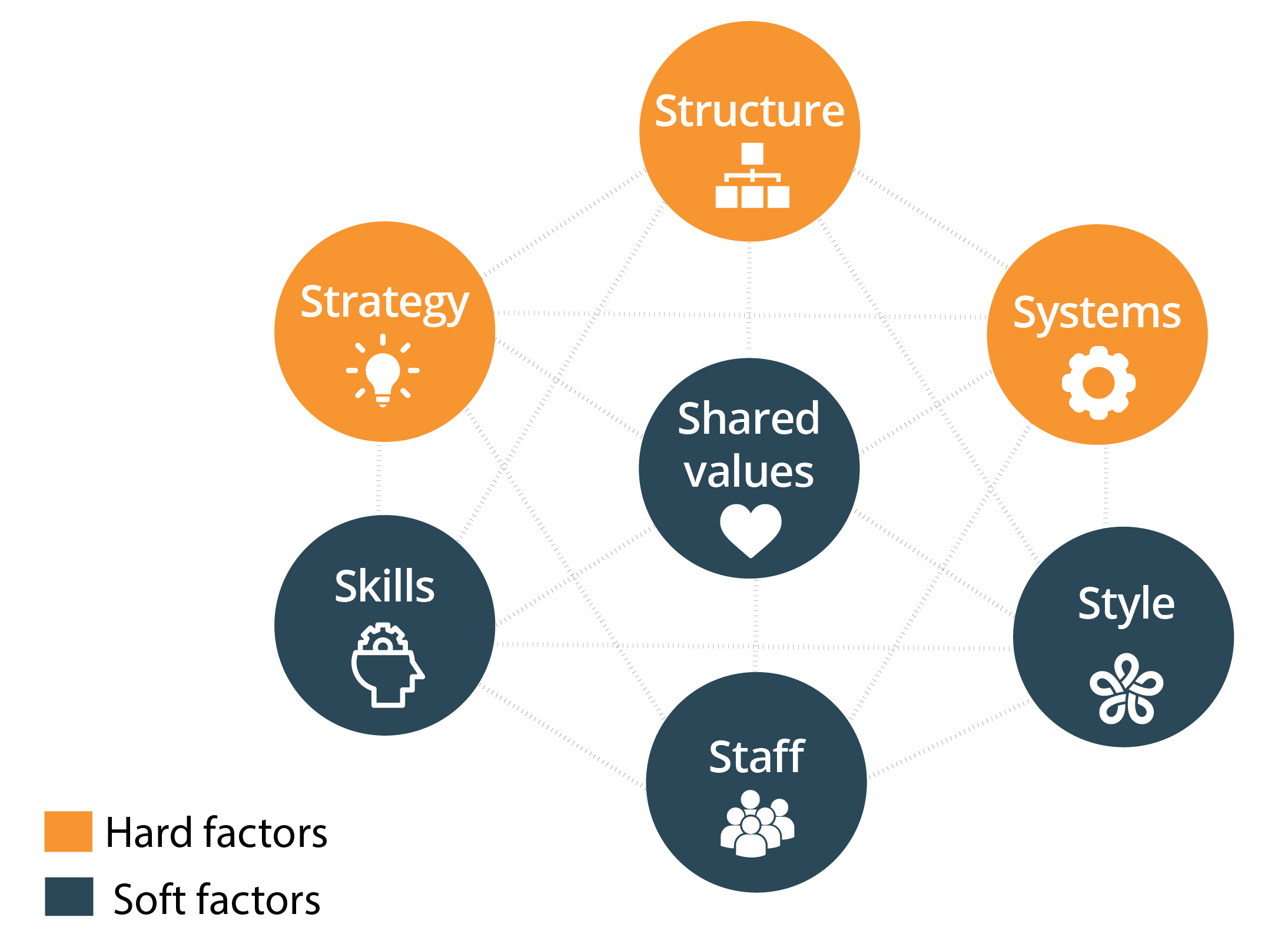Corporate culture is complex and often difficult to grasp. Models help to identify structures, understand connections and initiate targeted changes. Two well-known approaches offer different perspectives: the iceberg model and the McKinsey 7-S model.
The iceberg model according to Hall
The iceberg model – inspired by Freud and further developed by Edward T. Hall – depicts corporate culture as an iceberg:
- Visible elements – factual level: The tip of the iceberg refers to the visible elements – i.e. goals, structures and rules.
- Invisible elements – relationship level: The larger (and more important) part of the iceberg is below the water. This is where the hidden structures of the corporate culture are located. These include, for example, values, motives, emotions, needs, relationships, perceptions, attitudes, fears, mistrust and trust. These influence the elements that rise to the surface and ultimately guide them.
The McKinsey 7-S Model
The 7-S Model developed by Tom Peters and Robert Waterman provides a holistic description of organisations based on seven interrelated factors:
- Hard factors: Strategy, Structure, Systems
- Soft factors: Shared values, style, staff, skills

When which model is helpful
- Iceberg model:
Particularly suitable for cultural diagnoses, reflection and awareness raising, e.g. in change processes. It helps to look beneath the surface and reveal unconscious dynamics – especially in the case of deeply rooted behaviour patterns or when cultural friction is noticeable. - 7-S-Model:
Useful for holistic analysis of organisations and strategic alignment. It is particularly helpful in change processes where structural changes, new strategies or cultural realignment need to be considered together.
The choice of model depends on the goal: if the aim is to gain a better understanding of cultural tensions in everyday life, the iceberg model is a good place to start. If the aim is comprehensive organisational development, the 7-S model with its systemic view is helpful. Both show that corporate culture is not a side issue, but a central lever for sustainable success.
Making culture visible in recruiting
An E-recruiting software such as Refline can help convey your own culture right from the application process – for example, through authentic job advertisements, transparent communication and an optimal recruitment process. Equally important is a structured onboarding process. If you know your culture and live it in a targeted manner, you can attract talent that really fits your company – and thus operate effectively in the long term.